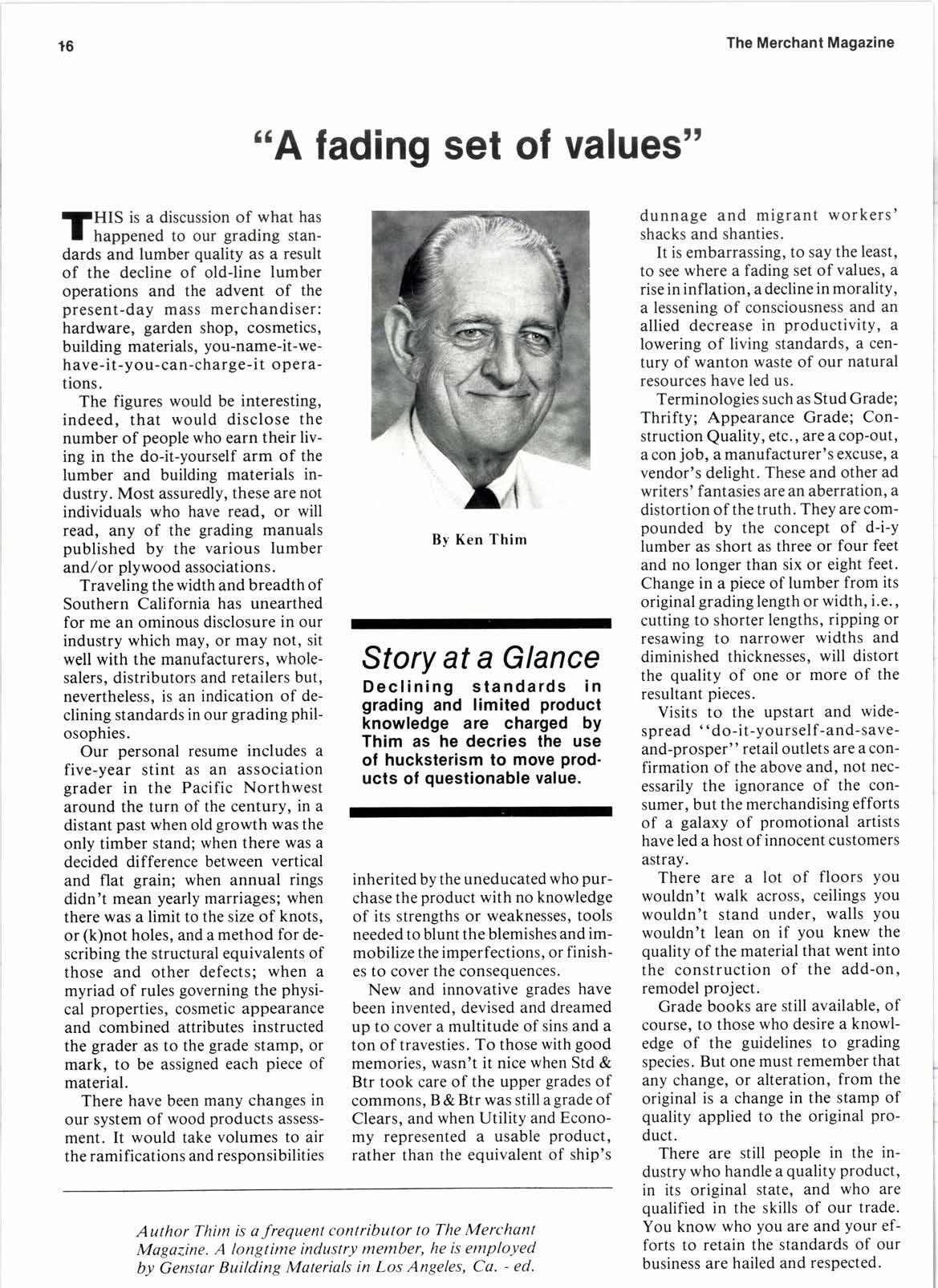
1 minute read
"A fading set of values"
IIHIS is a discussion of what has I happened to our grading standards and lumber quality as a result of the decline of oldline lumber operations and the advent of the present-day mass merchandiser: hardware, garden shop, cosmetics, building materials, you-name-it-wehave-it-you-can-charge-it operations.
The figures would be interesting, indeed, that would disclose the number of people who earn their living in the do-it-yourself arm of the lumber and building materials industry. Most assuredly, these are not individuals who have read, or will read, any of the grading manuals published by the various lumber and/ or plywood associations.
Traveling the width and breadth of Southern California has unearthed for me an ominous disclosure in our industry which may, or may not, sit well with the manufacturers, wholesalers, distributors and retailers but, nevertheless, is an indication of declining standards in our grading philosophies.
Our personal resume includes a five-year stint as an association grader in the Pacific Northwest around the turn of the century, in a distant past when old growth was the only timber stand; when there was a decided difference between vertical and flat grain; when annual rings didn't mean yearly marriages; when there was a limit to the size of knots, or (k)not holes, and a method for describing the structural equivalents of those and other defects; when a myriad of rules governing the physical properties, cosmetic appearance and combined attributes instructed the grader as to the grade stamp, or mark, to be assigned each piece of material.
There have been many changes in our system of wood products assessment. It would take volumes to air the ramifications and responsibilities
By Ken Thim










